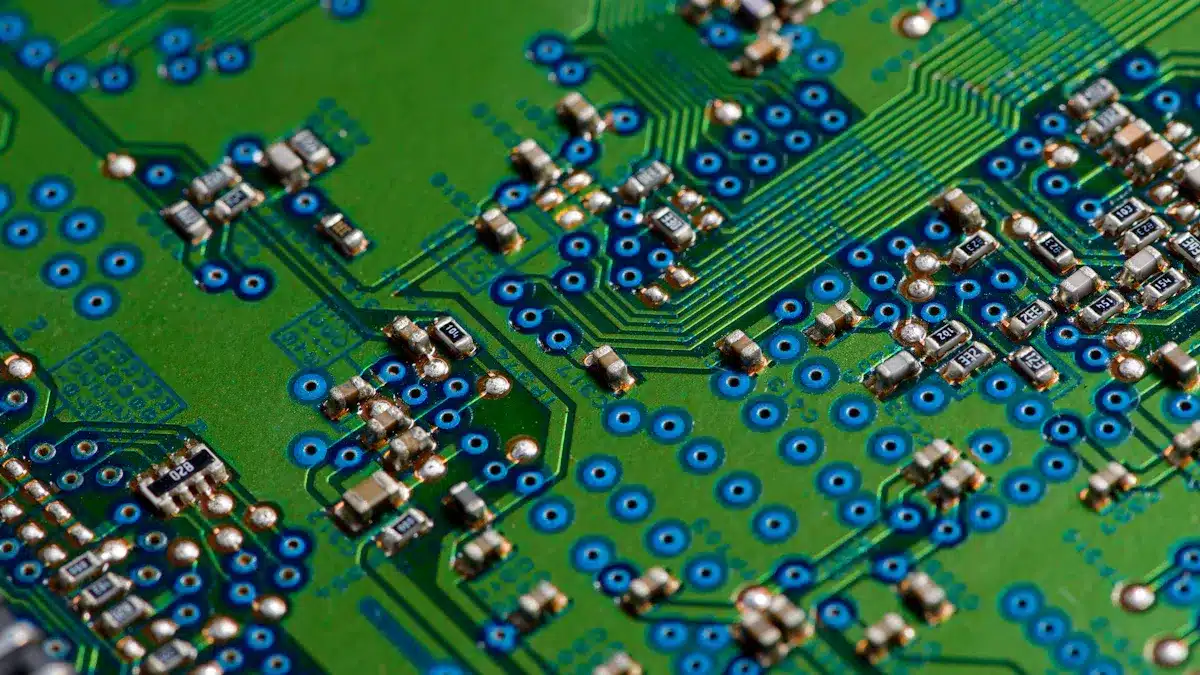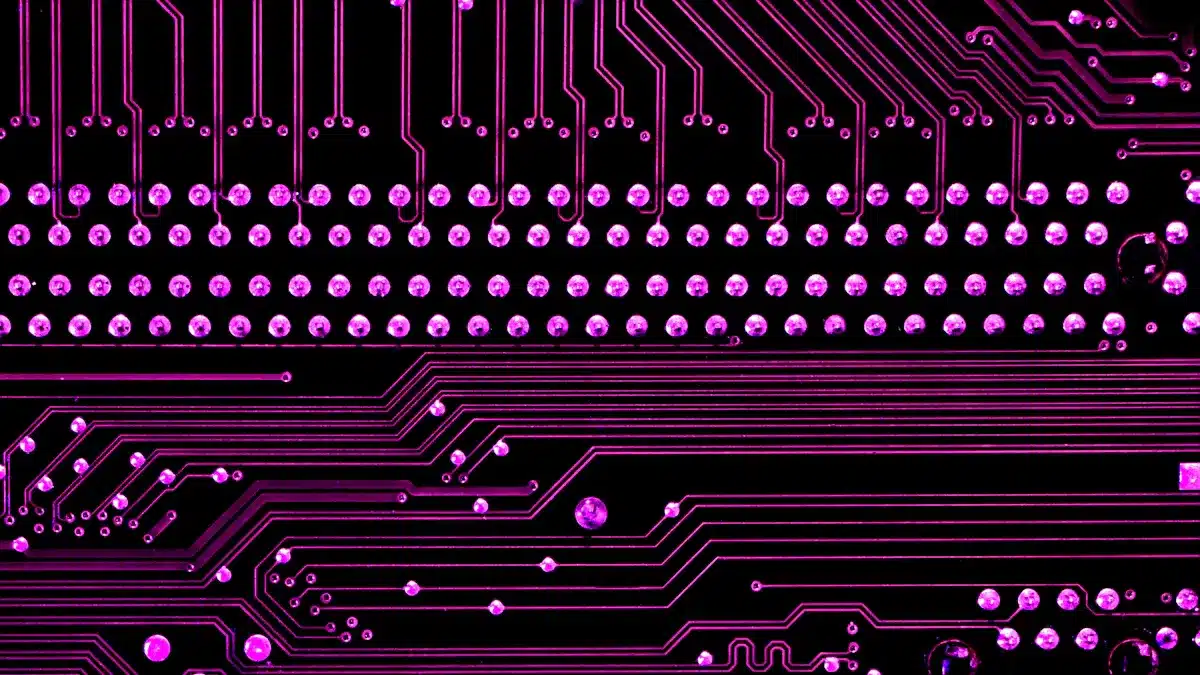
Choosing the right PCB design software is very important. It can change how easy it is to make your designs. Many tools are made for different skill levels. They work for beginners and advanced users. You have choices that can help you learn or improve your skills. When picking software, think about what you need and like. This will help you find the best tool for designing a PCB.
Key Takeaways
Picking the right PCB design software is very important. It can make designing easier and faster.
Beginners should use simple tools like EasyEDA, ExpressPCB, and KiCad. These tools help you learn the basics without too much stress.
Intermediate users can use software like Altium Designer, Eagle, and CircuitMaker. These tools have advanced features that help teamwork and improve design quality.
Advanced users need professional tools like Cadence Allegro, Mentor Graphics PADS, and SolidWorks PCB. These programs help with complex projects and make work easier.
Always think about your skill level and project needs when choosing software. The right tool can help you create better designs and make things run smoothly.
Best Software for Designing a PCB – Beginners

When you begin designing a PCB, picking the right software is very important. It can really help you learn. Here are three great options made just for beginners.
EasyEDA
EasyEDA is one of the best PCB design tools for new users. This tool works in your web browser. It has a simple design that makes it easy to use. You can start designing a PCB without needing to install anything. This is great for beginners.
Some important features of EasyEDA are:
Real-time collaboration: Work with others on your design easily.
Comprehensive documentation: Find tutorials and guides to help you learn.
Flexible file import/export: Share your designs or move them to other platforms easily.
Many users like EasyEDA because it is easy to access and use. It connects with manufacturing services. This helps you go from design to production smoothly. This feature makes your experience better as a beginner.
ExpressPCB
ExpressPCB is another good choice for beginners. It has a simple design that focuses on what you need. This tool lets you create schematics and PCB layouts in one place. This makes it easy to work through the design steps.
Key features of ExpressPCB are:
Integrated manufacturing service: You can order your PCBs right from the software.
Basic component library: Find a selection of parts to start quickly.
ExpressPCB’s simple design helps you avoid common problems beginners face. These include wrong component placement and bad routing practices.
KiCad
KiCad is a free PCB design tool that offers professional features while being easy for beginners. It helps you through the design steps with a clear process. This makes it easier to learn about circuit design.
Here are some features that make KiCad good for beginners:
Software | Features |
|---|---|
KiCad | Clear process, large libraries, push-and-shove router, 3D view, free benefits. |
KiCad has a strong community that helps it grow. Groups like CERN and the Raspberry Pi Foundation support it. This means you can find help and resources easily as you learn.
Best PCB Design Software – Intermediate Users

As you get better at designing PCBs, you might want software with more features. Tools for intermediate users have better options that can help your design process a lot. Here are three of the best PCB design software choices for intermediate users:
Altium Designer
Altium Designer is a strong tool for complex projects. It has an easy-to-use interface that helps you navigate tricky designs. This software combines electrical and mechanical design workflows. This allows teams to work together smoothly.
Key features of Altium Designer include:
Advanced error detection: This helps you find mistakes early in your design.
Real-time collaboration: You can share your designs with team members right away.
Comprehensive design rule checks: These checks help keep your project quality high.
With Altium Designer, you can make your workflow smoother and be more productive.
Eagle
Eagle is another great choice for intermediate users. It is affordable and has user-friendly features. This makes it good for beginners and mid-level designers. Eagle works with Fusion 360 for real-time updates. This is helpful for simpler projects. But, its version control might not be as strong as Altium’s. This can cause problems in bigger teams.
Notable features of Eagle include:
Extensive component library: You can find many parts to make your design easier.
Integrated simulation capabilities: This lets you check your designs before making them.
Eagle’s mix of features and cost makes it popular among intermediate designers.
CircuitMaker
CircuitMaker is a free PCB design tool that helps with teamwork and design improvements. It has advanced tools for creating complex PCB layouts. The easy interface and large design libraries make it simple to follow the design steps.
Benefits of using CircuitMaker include:
Teamwork: Work with others to share ideas and skills.
Expedited issue resolution: Quickly solve design problems together.
Continual awareness of trends: Stay updated on new technologies and methods.
CircuitMaker improves your design process by encouraging creativity and teamwork among users.
Feature | Intermediate Tools | Beginner Tools |
|---|---|---|
Error Reduction | Advanced error detection and design rule checks | Basic error alerts |
Collaboration | Real-time sharing and version control | Limited collaboration features |
Simulation Capabilities | Integrated simulation for performance validation | Minimal or no simulation options |
Enhanced Design Rule Checking | Sophisticated algorithms for comprehensive analysis | Basic rule checks |
Advanced PCB Design Tools
When you get better at designing PCBs, you need tools for tough projects. Professional software has features that help your design work and teamwork. Here are three of the best PCB design software choices for advanced users.
Cadence Allegro
Cadence Allegro is great because it connects design and manufacturing. This software is perfect for complicated PCB projects. It makes things faster with features like:
Feature | Description |
|---|---|
Advanced Integration for RF Design | Connects design and manufacturing, making it easier to manage complex designs. |
Manufacturing Planning Tools | Speeds up the change from idea to product, helping you get to market faster. |
Design For Manufacturing (DFM) | Gives real-time checks for manufacturability, cutting down on rework and speeding up design. |
With Allegro, you can make your workflow smoother and ensure your designs fit manufacturing needs.
Mentor Graphics PADS
Mentor Graphics PADS is another strong tool for advanced PCB design. It gives a full solution for analog, mixed-signal, and digital designs. Key benefits include:
Feature | Key Benefits |
|---|---|
Lets you create full designs in one place, making it easier. | |
DDR Simulation | Quickly finds and fixes signal and timing problems in DDRx designs. |
Electrical DRC | Speeds up the electrical sign-off by spotting design issues before manufacturing. |
PADS helps you keep high-quality designs while cutting down on troubleshooting time.
SolidWorks PCB
SolidWorks PCB helps design and engineering teams work together. This software links PCB design with a simple interface connected to SOLIDWORKS. Its features include:
Feature | Description |
|---|---|
Integrated Collaboration | Combines PCB design with teamwork, allowing for real-time updates. |
Managed ECO Change Process | Makes design updates easier while keeping workflows efficient. |
Bidirectional Edits | Keeps electrical and mechanical teams in sync, reducing communication problems. |
With SolidWorks PCB, you can invite others to a cloud space, making it easier to handle feedback and updates.
These advanced PCB design tools greatly affect how fast you finish projects. They allow quick prototyping and smooth design changes, letting you adjust based on testing feedback quickly. By picking the right software, you can improve your design work and get better results.
Choosing the right PCB design software is very important for your success. Here’s a quick look at the best tools for each skill level:
Beginners: EasyEDA, ExpressPCB, and KiCad are easy to use and have basic features.
Intermediate Users: Altium Designer, Eagle, and CircuitMaker offer more advanced tools and ways to work together.
Advanced Users: Cadence Allegro, Mentor Graphics PADS, and SolidWorks PCB provide professional features for tough projects.
Before you decide, think about your skills and what your project needs. Look at things like how it works, how easy it is to use, and if it can help you grow. The right design tools can really improve your experience when designing a PCB. This leads to better results and smoother workflows.
FAQ
What is PCB design software?
PCB design software helps you make printed circuit boards. It lets you create schematics, arrange components, and prepare files for making them. You can pick software based on your skill level and what your project needs.
Can beginners use advanced PCB design tools?
Yes, beginners can try advanced tools. But, they might find it hard to learn. Start with easy software to build your skills. Once you feel good, check out advanced options to improve your designs.
How do I choose the right PCB design tool?
Think about your skill level, how complex your project is, and your budget. Look for features that fit your needs. Read reviews and try free versions to find what works best for you.
Are there free PCB design tools available?
Yes, there are many free PCB design tools. Examples are KiCad and CircuitMaker. These tools have basic features for beginners and intermediate users without any cost.
What should I do if I encounter issues while designing?
If you have problems, check the software’s documentation or community forums. Many tools have active user groups that can help. You can also watch tutorial videos for more help.
See Also
Key Guidelines for Selecting a Reliable PCBA Manufacturer
Best Practices for Finding the Ideal Main PCBA
Steps to Choose the Perfect PCBA Manufacturer for You
Effective Strategies to Improve Your PCBA Engineering Skills